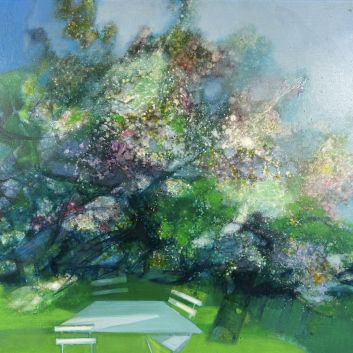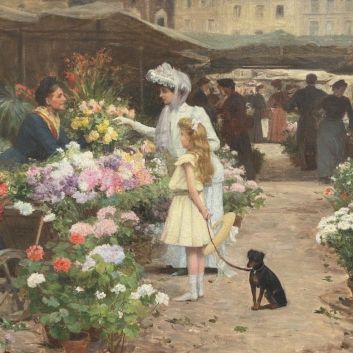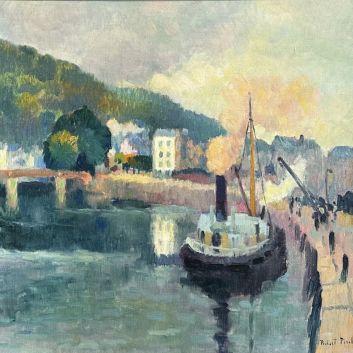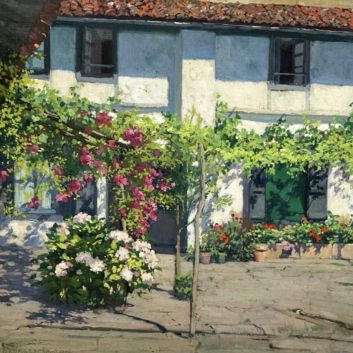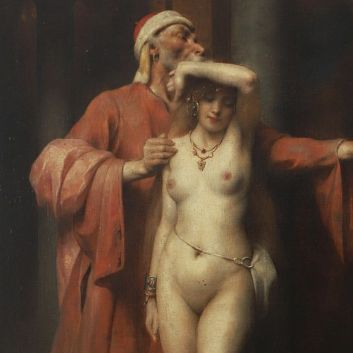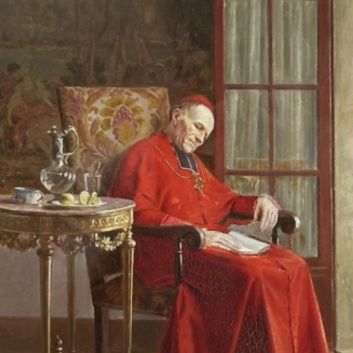Rating and value of paintings by André Lagrange
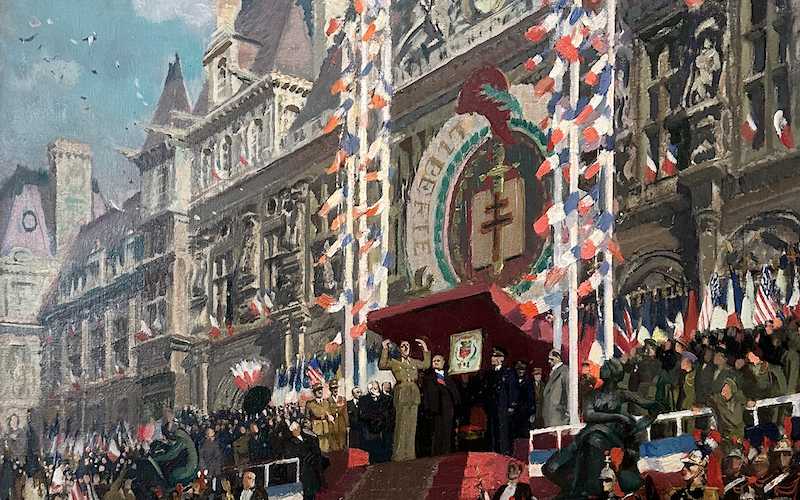
If you own a work by or about the artist André Lagrange and would like to know its value, our state-approved experts and auctioneers will be happy to offer you their appraisal services.
Our specialists will carry out a free appraisal of your work, and provide you with a precise estimate of its current market value.
Then, if you want to sell your work, we'll point you in the right direction to get the best possible price for it.
Rating and artist's value André Lagrange
André Lagrange was a French Impressionist painter who followed in the footsteps of Fernand Cormon. He devoted himself to painting and depicting military scenes.
The prices at which these works were sold ranged from €40 to €11,900, a substantial delta but one that speaks volumes about the value that can be attributed to Lagrange's works.
The oil on canvas Pique-nique d'été, dating from 1920, sold for €11,900, whereas it was estimated at between €9,000 and €13,000.
Order of value from a simple work to the most prestigious
Technique used | Results |
|---|---|
Print - multiple | From €60 to €330 |
Drawing - watercolor | From €40 to €2,600 |
Oil on canvas | From €80 to €11,900 |
Response in less than 24h
Artist's style and technique
André Lagrange's style, though rooted in the figurative tradition, is distinguished by an impressive mastery of light and texture.
Trained in classical techniques, he quickly developed a personal approach in which the representation of reality is tinged with a discreet lyricism. Lagrange favors simple scenes, often drawn from everyday life or nature, which he interprets with great sensitivity.
His works are marked by a sober palette, dominated by earthy tones and soft nuances, reminiscent of artists such as Jean-Baptiste Corot or Eugène Boudin.
However, far from being content with a simple reproduction of the visible world, Lagrange seeks to capture the essence of things, through a progressive purification of form and a subtle treatment of matter.
The artist's fluid yet precise touch lends her paintings a peaceful, almost meditative atmosphere. In her compositions, silence becomes palpable, as if suspended in time, evoking a certain melancholy but also a profound serenity.
Lagrange is thus part of a pictorial tradition in which the landscape, far from being a mere backdrop, becomes a mirror of inner emotions, an invitation to contemplation.
André Lagrange shares a stylistic proximity with many artists who, like him, have captured the essence of great historical events with a detailed, realistic approach.
Among them are Jean-Louis Forainwhose scenes, imbued with gravity and emotion, reflect an acute sensitivity to the upheavals of his time, particularly in the context of war and social change.
Lagrange can also be compared toÉdouard Detailleknown for his remarkably precise military paintings, immortalizing decisive moments in national life with an almost documentary depth.
Finally, the work ofAlbert Besnardwith his realistic yet delicate compositions, shares with Lagrange a particular attention to the play of light and solemn atmospheres, testifying to the same desire to make history palpable through painting.
This attention to detail, combined with tangible emotion, places André Lagrange in a line of artists for whom art is not just about representing, but transcending time to offer viewers a deeper understanding of the great moments of their era.
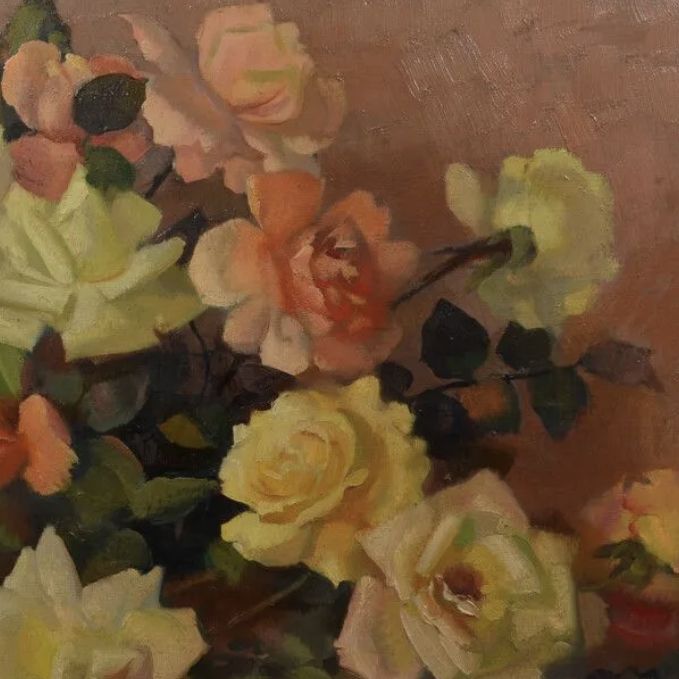

The life of André Lagrange
André Lagrange (1889-1958) was a Parisian painter whose work illustrates a deep attachment to key events in French history.
Born in Paris, Lagrange grew up in a city rich in artistic and historical inspiration, a backdrop that has profoundly influenced his career.
From an early age, he showed a fascination for the key moments of public and national life, which he would later transcribe with a unique sensitivity in his art.
Trained at the École des Beaux-Arts in Paris, Lagrange turned to realistic painting, concentrating on capturing historical scenes with meticulous precision.
He stands out for his ability to translate into paint not only visible facts, but also the collective emotions they arouse.
His technique, inherited from the classical masters, highlights meticulous composition, a rigorous sense of detail and a remarkable use of light contrasts.
One of his signature works, La remise de la Croix de la Libération à la ville de Paris en 1945, is a perfect illustration of his style. This historic scene, vibrant and solemn, testifies to his talent for capturing the very essence of great ceremonies.
You can feel the euphoria and pride of a liberated capital, where every element, from the flags flying to the official figures and the architecture of the Hôtel de Ville, helps to recreate the triumphant atmosphere of the era.
Lagrange manages, with exceptional precision, to immortalize the collective emotion of the Liberation, transforming the scene into a poignant testimony to national memory.
During his career, Lagrange also depicted other significant moments in French history, alternating between battle scenes, official ceremonies and portraits of illustrious figures.
His work, imbued with an almost photographic realism, stands out for the way he makes the invisible visible, capturing the subtleties of collective emotion.
During his lifetime, his paintings were widely exhibited and recognized, testifying to his importance in the artistic panorama of his time.
Today, André Lagrange remains a key figure for those interested in historical painting, and his work continues to resonate as a committed work dedicated to national memory and the great moments of French history.
Focus on a historic Lagrange scene
André Lagrange's La ville de Paris reçoit la croix de la Libération, April 2, 1945, is a vibrant and solemn depiction of a key moment in French history.
The scene captures the emotion of a public ceremony symbolizing recognition of the efforts and sacrifices made by the city of Paris during the Second World War.
The composition is dominated by the Hôtel de Ville de Paris, magnificently decorated with brightly colored flags and banners, evoking an atmosphere of festivity and patriotism.
The building's imposing architectural lines, meticulously reproduced, bear witness to Lagrange's eye for detail and add depth to the scene.
The color palette is striking: the red, white and blue of the flags stand out against the gray stone of the building, reinforcing the solemnity of the event.
Lagrange excels in the art of conveying enthusiasm and popular fervor. In the foreground, a dense crowd of soldiers, dignitaries and citizens, all facing the main stage.
The figures, though small in relation to the grandeur of the architecture, are full of life and energy, as evidenced by the expressive gestures and postures.
The heart of the work lies in the central podium, where the Cross of Liberation is awarded. This moment of recognition, placed at the center of the composition, captures the viewer's immediate attention.
The cross itself, framed by patriotic and religious symbols, is painted with a finesse that reflects the importance of this decoration.
Lagrange stages the handover theatrically, paying tribute to the heroism and courage of Paris during the Occupation.
The blue sky dotted with a few light clouds lends an almost unreal atmosphere to the whole, a sort of calm after the storm. In the background, the imposing architecture blends into the horizon, evoking a capital both glorious and resilient.
André Lagrange brilliantly combines history and emotion, illustrating a major event while celebrating national unity.
Its scope and rich narrative embody the sense of collective pride that animated France at the end of the war, and recall the symbolic weight of the city of Paris in the liberation of the country.
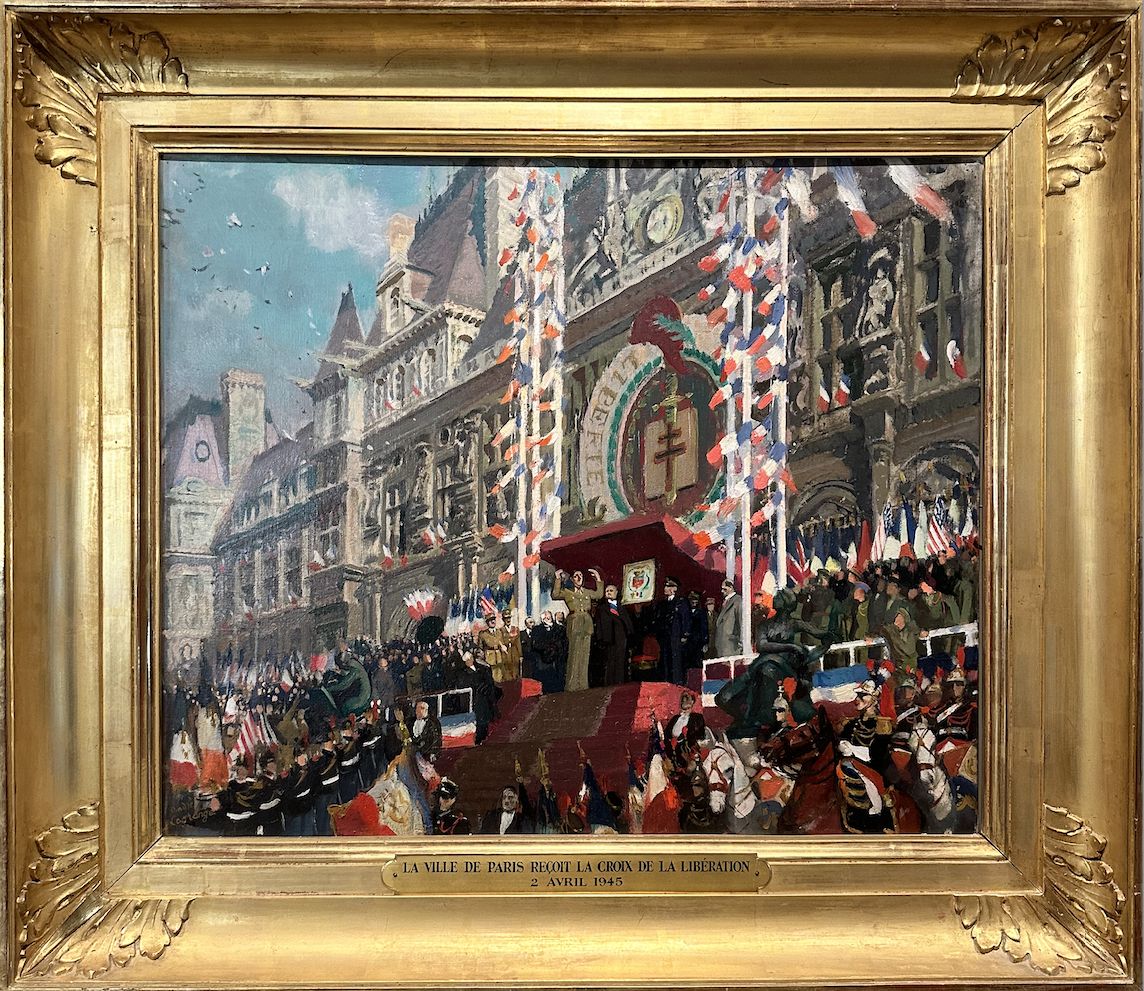
André Lagrange's influence on his era
André Lagrange left his mark on his era with a body of work deeply rooted in France's great historical events, offering his contemporaries vivid and moving depictions of key moments in the 20th century.
His paintings capture the spirit of a nation in the throes of change, shaped by two world wars, the Liberation, and the social movements that redefined its identity.
His paintings, often grandiose and solemn, reflect not only his talent for accurately transcribing historical details, but also his ability to capture the collective emotion that reigned at these pivotal moments.
Lagrange was not just a history painter, he was a witness to his time, and his works remain as visual archives, a palpable memory of the events that forged modern France.
His artistic contribution helped perpetuate the memory of those decisive moments, constantly reminding his contemporaries - and us - of the importance of collective memory in building a national identity.
With his realistic and deeply human approach, he not only influenced the artistic circles of his time, but also offered his fellow citizens a new way of seeing and understanding the history of their country.
Recognizing the artist's signature
André Lagrange signs the bottom of his canvases with his name in all lower-case letters. In some works, he also inscribes the date.

How to know the value of a work of art
If you happen to own a work by André Lagrange, don't hesitate to ask for a free estimate using the form on our website.
A member of our team of experts and certified auctioneers will contact you promptly to provide you with an estimate of the value of your work, as well as any relevant information about it.
If you're thinking of selling your work of art, our specialists will also be on hand to help you find alternative ways of selling it at the best possible price.
Response in less than 24h
Related topics

Rating and value of furniture, drawings and paintings by Le Corbusi...
Le Corbusier was a Franco-Swiss architect, painter, artist and designer whose works are highly regarded and valued.
Read more >

Rating and value of paintings by Mahmoud S...
Mahmoud Said is an Egyptian Orientalist painter who produced drawings and paintings that are highly rated and valuable at auction. Estimated in 24h.
Read more >

Rating and value 2024 of paintings by Mich...
Michel Moreno is a French contemporary artist who has produced works of considerable value at auction.
Read more >
Secure site, anonymity preserved
State-approved auctioneer and expert
Free, certified estimates
